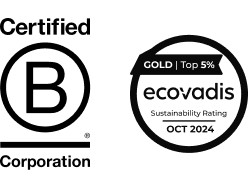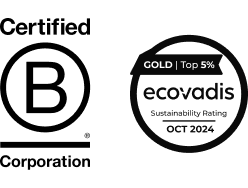When was the last time you evaluated your office pods for true accessibility? Not just to tick a box on the compliance checklist, but to ensure they meet the full spectrum of user needs—from mobility and vision impairments to sensory processing differences and hidden disabilities.At IE, we’ve noticed a growing issue in workplace designs: work pods and booths that often exclude the very people they’re supposed to support. While the intention may be right, the execution can leave employees, especially those with disabilities, excluded from the spaces meant to help them most.
From wheelchair users to neurodivergent individuals, current designs too often prioritise aesthetics and technology over inclusivity. And it’s not just about ramps and turning circles. Accessibility spans a wide spectrum of needs, and our office booths and pods must adapt to meet them.
Accessibility is a spectrum; stop designing for one archetype
Most people hear “accessible” and think “wheelchair access.” Yes, physical accessibility is essential, but what about invisible barriers beyond width clearances and ramp gradients?
For example, neurodiverse individuals on the autism spectrum or with ADHD may require calming environments with sound insulation, soft lighting, and soothing spaces to self-regulate. Similarly, blind and low-vision employees need tactile cues, Braille labelling, accessible signage, and high-contrast interfaces to interact independently.
People with limited dexterity need controls and door handles designed to function with minimal effort or alternative grip, while those with hearing impairments need visual notifications and acoustic privacy, not just soundproofing.
You may also have colleagues with hidden disabilities, such as chronic pain or anxiety, who benefit from flexible layouts, assistive tools, and supportive environments that provide the psychological safety to ask for modifications if need be.
In the same way accessibility is not a one-size-fits-all checkbox, pods and booths can’t follow cookie-cutter design approaches that only cater for a handful of people. Truly inclusive design is a philosophy, and it needs to evolve to include workplace booths and pods.
As Ross Hovey, Group Accessibility Manager at Lloyds Banking Group, shared in an interview in a DiverCity Podcast episode:
“Building design [in the past] was all about people with ‘wheels and white sticks’, but disability has moved so much from that. There are so many more different invisible disabilities that we need to support, especially [for] colleagues with neurodivergent needs.”
Common pitfalls in pod and booth design
Despite their intent to offer privacy and focus, many pods and booths today fall into predictable traps that limit their usefulness for employees with specific accessibility needs. The problems we so often see are:
- Inadequate dimensions: Most pods are too small or narrow to accommodate a standard wheelchair, let alone allow room for manoeuvrability or for a carer to accompany the user.
- Poor visual and sensory design: Low-contrast control panels, touchscreens with no tactile markers, confusing interfaces, and no Braille signage exclude users with low vision or blindness from even the most tech-forward designs.
- Non-collaborative layout: Some users may require assistance from carers, other colleagues, or guide or support dogs, but the tight layout of most booths and pods makes co-usage physically impossible.
- Sensory overload triggers: High-gloss finishes, flickering LED lights, intense lighting, noise leakage, and lack of acoustic treatment can all trigger sensory overload and overwhelm employees with sensory sensitivities.
Inclusive design oversights like these can turn a supposed work haven into a barrier that quietly marginalises entire groups of employees if left unattended.
Inclusive booth featured at Clerkenwell Design Week 2025
Inclusive innovation spotted at Clerkenwell Design Week
The IE team was thrilled to see inclusivity on the agenda at Clerkenwell Design Week 2025, with many manufacturers embracing inclusive design practices and innovating accessible products.
Orangebox’s Beyond the Desk booth range, designed to consider multiple user needs, was one such product showcased at CDW. With inclusivity at the range’s core, it offers spacious layouts, ergonomic worktables, and acoustic zoning, reflecting a more thoughtful design approach.
.webp?width=1600&height=900&name=Orangebox-beyond-the-desk-booth-range%20(1).webp)
Orangebox | Beyond the Desk booths
Beyond the products on display, several talks and seminars on inclusive design were held, including a panel discussion by IE furniture partner Workstories titled ‘Neurodiversity at Work: Designing Spaces that Support Everyone’, where industry experts and neurodiverse community members discussed how to empower neurodiverse colleagues.

Workstories | ATELIER Privé Desk Booth
It’s encouraging to see inclusivity and accessibility woven into broader narratives at industry events like these, giving us glimmers of a more inclusive future on the horizon.
How to incorporate inclusivity by design, not default
The goal of inclusive design is to allow everyone, regardless of ability, to use the same space as independently as possible. When you design for accessibility, you foster a more productive and inclusive work culture that benefits everyone, not just those with disabilities.
Here’s what to consider when adopting inclusive workplace booths and pods:
🚪Door handles and access systems should be reachable and operable with limited dexterity. An optimum solution is automatic doors, and either a hinged or height-adjustable worksurface to optimise comfort & access.
💡Lighting should be dimmable and positioned to reduce glare for those with visual sensitivities.
🔊 Acoustic treatment is essential—not just soundproofing, but also mitigating echo and frequency sensitivities.
🪑 Furniture with varied heights and seating options (with and without arms) supports a broader range of bodies and needs.
⚠️ Colour and contrast must be used intentionally—for wayfinding and usability (e.g., high-contrast buttons, doorframes).
🧑🦼➡️ Wider entries and turning circles should exceed minimum legal thresholds to allow for companion access or powered wheelchairs.
🎛️ Tactile and visual cues should be included, like controls with Braille and high-contrast finishes to support low-vision users.
Conclusion
Real inclusivity isn’t reactive. It’s embedded. It’s asking people what they need and going beyond “can someone use this?” to “does everyone feel welcome here?” And nowhere is inclusive design more essential than in the quietest corners of your workplace—the places where people go to focus, regroup, or find calm.
Inclusion shouldn’t stop at the office entrance; it should continue all the way into the pod. But if your pods don’t serve everyone, they’re not truly serving anyone. Whether it's reconfigurable layouts, sensory zoning, or movable tech tools, businesses must enable choice and dignity for everyone, no matter their physical or mental differences.
At IE, we’re pushing the conversation forward with inclusive, adaptable spaces that empower everyone. We work directly with users, DE&I teams, and workplace strategists to uncover the real needs of all employees.
Get our Blueprint for Inclusive Workplaces of the Future to learn more about our approach, or contact us to discuss your next workplace design project.









